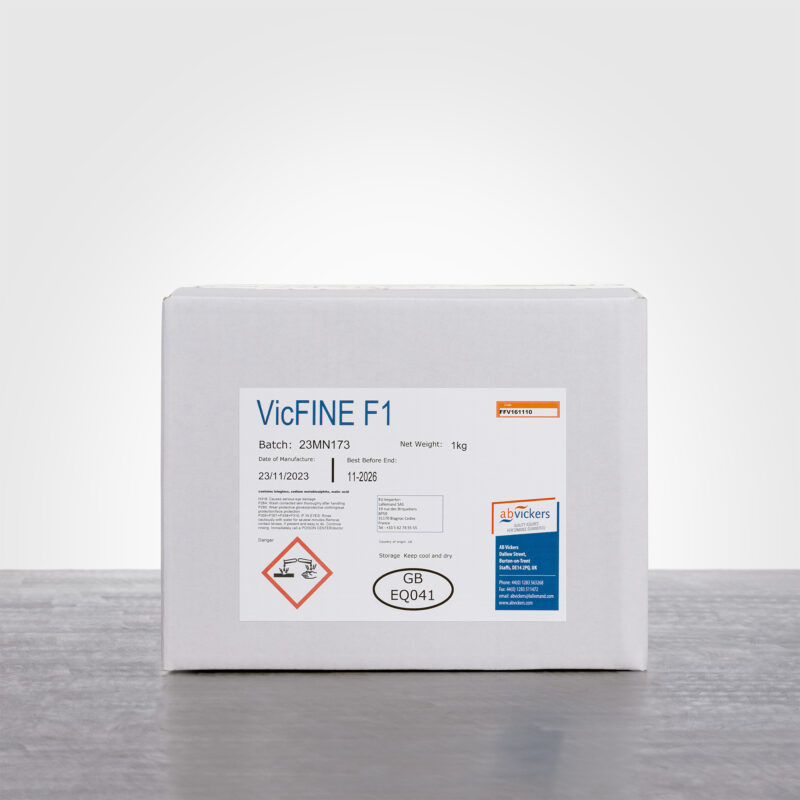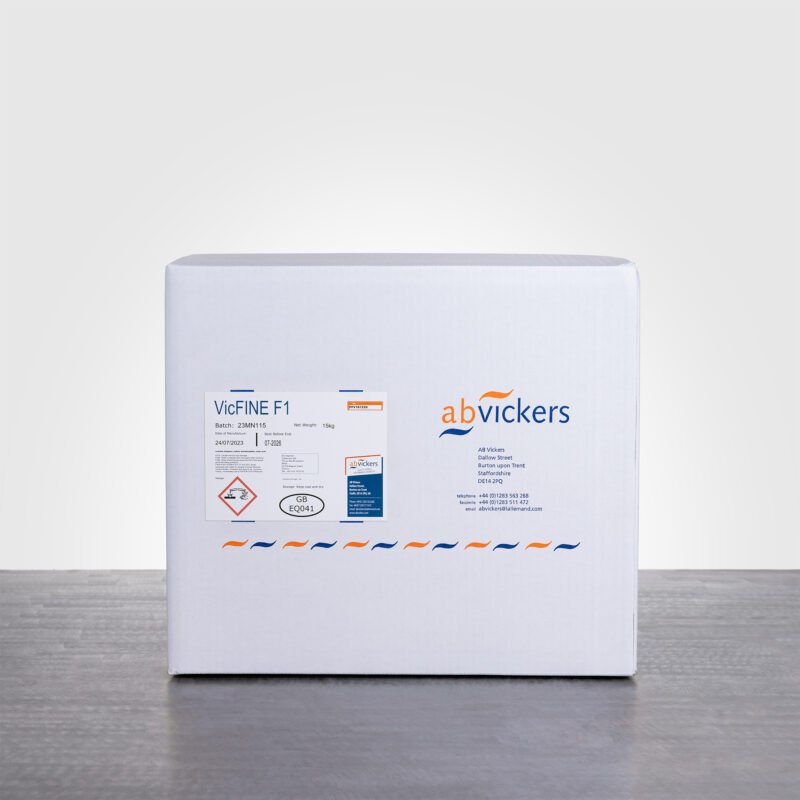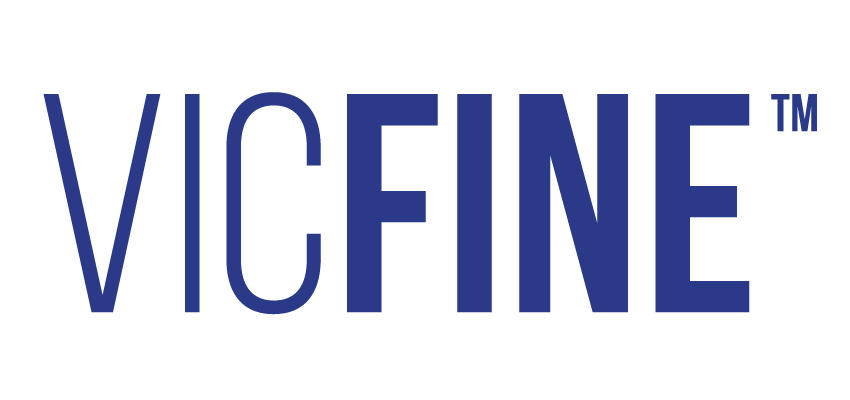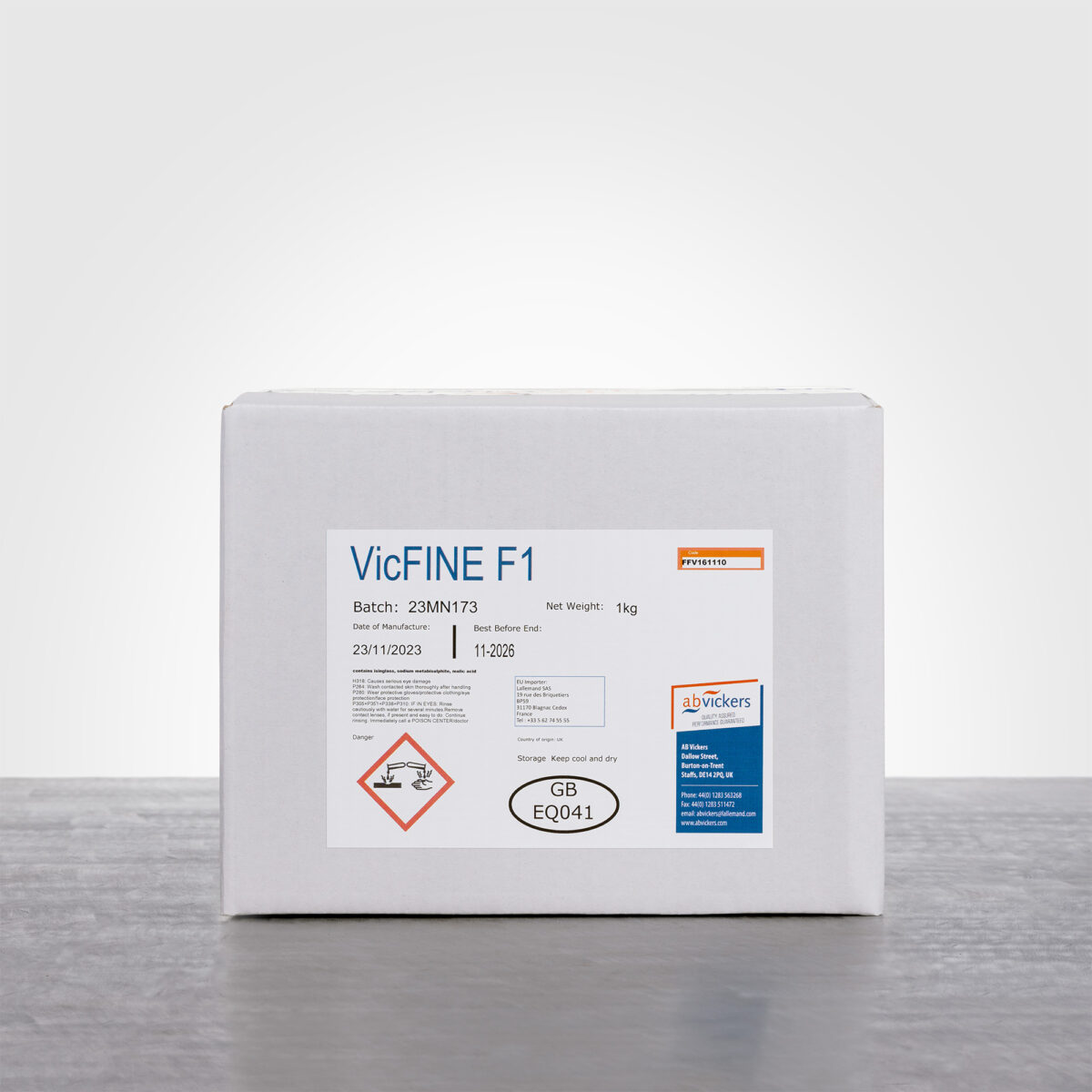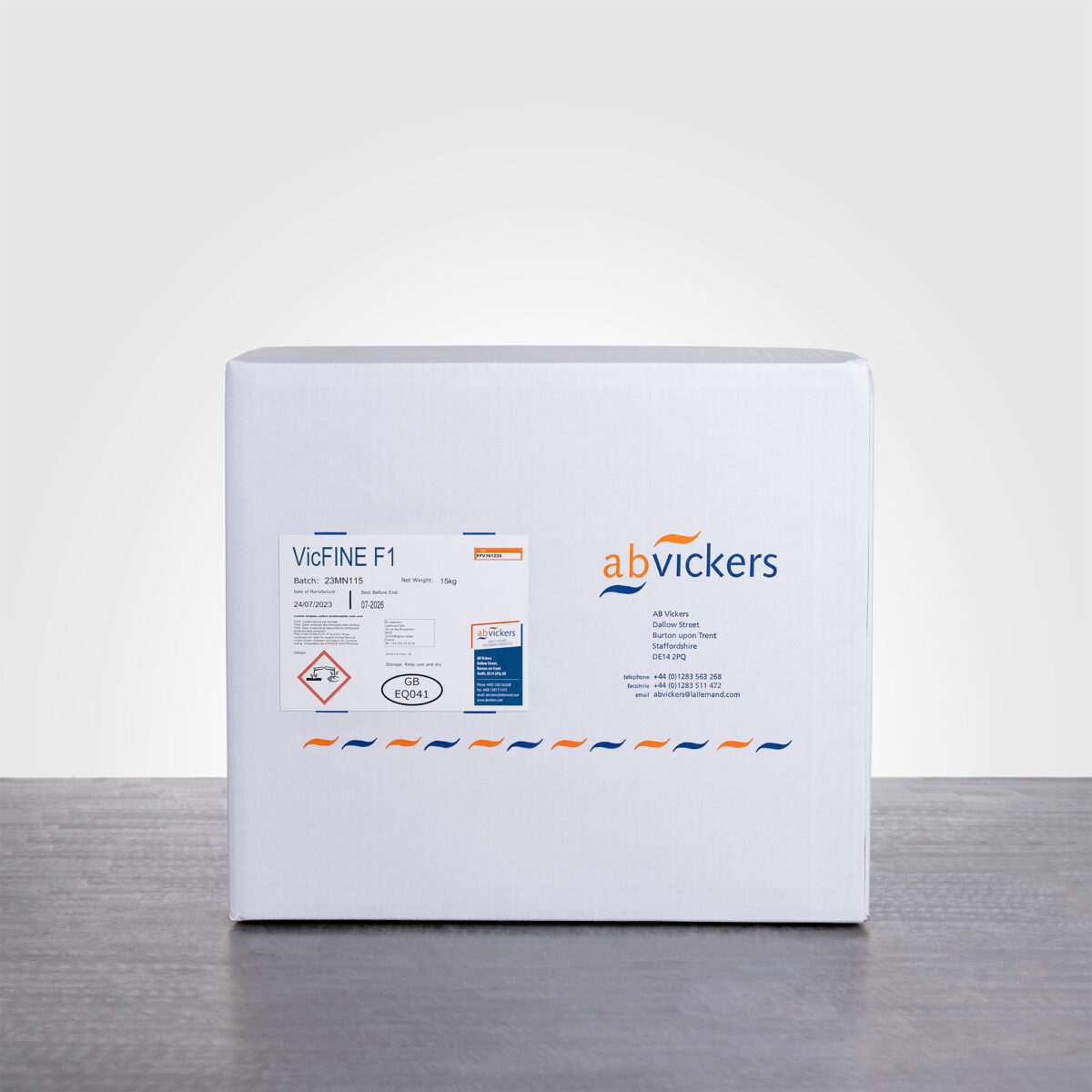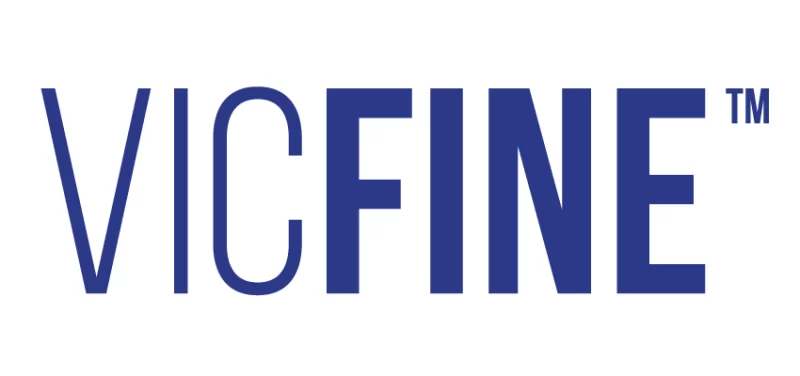
Vicfine™ Beer Clarifications
Vicfine™ is purified isinglass in convenient powder form. It is added to beer at the end of fermentation to speed maturation and improve filtration by removing yeasts and protein particles. For ease of use Vicfine™ in its standard form includes the necessary acid and preservative already blended.
